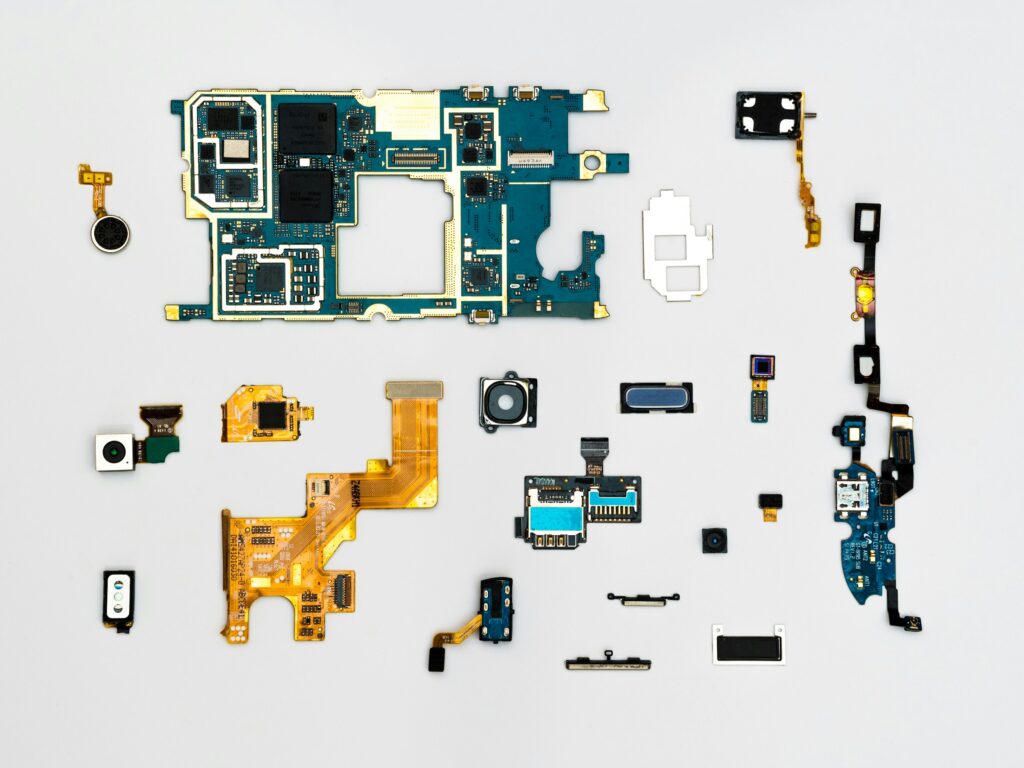
What Impact has the eSIM had on the Smartphone Industry?
What is an eSIM?
The traditional SIM card has long been a staple in mobile communication, serving as the gateway between a device and the mobile network. However, with technological advancements, the physical limitations of traditional SIM cards became apparent.
With devices getting slimmer and more streamlined, traditional SIM cards take up valuable space. Even the nano SIM, measuring in at 12.3mm × 8.8mm × 0.67mm, is no match for the tiny eSIM, measuring 6mm × 5mm × 0.9mm.
Furthermore, as devices become more innovative and flexible, the rigid form of a physical SIM card can be a constraint in creating new designs. Take the Motorola Razr 40, for example. Its unique, bendy form would not have been possible with a traditional SIM card of any kind. A SIM card slot of any size can have implications on other design features and functionalities too, including water resistance. Eliminating an external opening, such as where a traditional SIM would be inserted, makes handsets much more watertight.
How do eSIMs work?
For these reasons, the eSIM was developed and deployed. Embedded into the hardware of a smartphone itself during the manufacturing process, the eSIM comes pre-installed with an initial mobile network profile.
The eSIM was developed by the Global Platform for Subscription Management (GSMA) in 2012. The standardisation efforts put in place by the GSMA ensure the seamless adoption of eSIMs across many new devices and mobile networks, advancing interoperability.
The way in which an eSIM works revolves around remote provisioning.
This means tasks can be carried out on the eSIM, such as obtaining credentials and keys, without an internet connection. The rules and steps for this process are set by the Remote SIM Provisioning Architecture (RSP). Inside this system, there are important parts like the Subscription Manager – Secure Routing (SM-SR) and Subscription Manager – Data Preparation (SM-DP). They make sure that the information about the mobile company is sent securely to the eSIM and get it ready to use.
To make sure everything stays safe, there are strong security features like encryption and authentication that protect sensitive information during this setup.
Not all devices support eSIM technology, but it’s becoming more common in newer smartphones, tablets, smartwatches and other connected devices. eSIMs promote easy machine-to-machine conversations. This is helpful when you have multiple devices you want to connect or would like to switch networks, and particularly helpful when overseas.

Advantages of eSIM technology
eSIM technology offers several benefits over traditional physical SIM cards, contributing to its growing adoption in various devices and applications. Here are some of the key advantages of eSIM technology:
Enhanced flexibility
Unlike physical SIM cards, eSIMs eliminate the need for a physical card swap. Users can switch between networks and plans effortlessly through software updates, promoting user convenience.
Space efficiency
As eSIMs eliminate the need for a physical card slot, device manufacturers can utilise the saved space for other components, leading to more compact and streamlined designs.
Global connectivity
eSIMs facilitate easy access to local carriers when traveling, allowing users to connect seamlessly without the hassle of acquiring a local SIM card

Motorola’s embrace of eSIM technology
Motorola has been quick to embrace eSIM technology, recognising its transformative potential. The integration of eSIMs into Motorola devices reflects the company’s commitment to staying at the forefront of technological innovation, as well as addressing more global issues.
Seamless connectivity across devices
The majority of Motorola’s smartphones boast eSIM compatibility, including the Motorola Razr, Moto G, and Motorola Edge families. This integration ensures that users can enjoy the benefits of eSIM technology across a diverse range of devices.
Collaboration with partners
Motorola has strategically collaborated with major telecom carriers to optimise the functionality of eSIMs in their devices. This collaboration ensures a seamless user experience and promotes widespread adoption.
By aligning with international carriers, Motorola reinforces its commitment to providing users with global connectivity options, aligning with the borderless nature of eSIM technology.

Sustainability and ESG considerations
The adoption of eSIM technology by Motorola is not merely a technological evolution but also aligns with broader sustainability and ESG goals. The positive implications of eSIMs on the environment and societal wellbeing underscore their relevance in the modern era.
Reducing waste
The transition from physical SIM cards to eSIMs contributes to the reduction of electronic waste. As eSIMs are embedded directly into devices, there is a decreased need for disposable plastic SIM cards.
Furthermore, the elimination of physical SIM card slots allows for more robust device designs. This, coupled with the ease of software-based carrier switching, encourages users to keep their devices for longer periods, reducing the frequency of electronic device turnover.
Energy efficiency and carbon footprint
The integration of eSIMs simplifies the manufacturing process, reducing the energy and resources required to produce traditional SIM card slots. This efficiency contributes to lower carbon emissions and a more sustainable supply chain.
The elimination of physical SIM card slots results in lighter and more compact devices. This reduction in weight contributes to lower transportation-related carbon emissions during the distribution of devices.
User empowerment and social impact
eSIM technology enhances digital inclusion by facilitating easier and more affordable access to mobile connectivity, especially in regions where traditional SIM card distribution might be challenging.
As a company, Motorola’s adoption of eSIM technology demonstrates its commitment to social responsibility by aligning its business practices with environmentally friendly and socially conscious solutions.
The future of smartphone technology
The evolution of SIM card technology represents more than just technical development. It shows a commitment by smartphone companies to improving sustainability in the sector and aligning business practices with the principles of ESG.
Motorola’s own adoption of eSIMs, as well as reducing packaging, using recycled materials and improving energy efficiency highlights how connectivity and sustainability can go hand in hand.
As the smartphone industry continues to explore and develop new ways to improve technology, whilst simultaneously working on ESG initiatives, the eSIM will be forever marked as a turning point in history.


